CO2, or carbon dioxide, is totally odorless and tasteless! That means you won't smell it at all, which can be tricky since high levels can be dangerous. It's produced when we breathe, and from burning fuels. In places like labs or homes with dry ice, CO2 can build up quickly. If you ever feel a burning sensation in your nose, it might mean there's too much CO2 around! Always make sure areas are well-ventilated and consider using monitoring systems for safety. Stay aware, and you can keep your environment safe and healthy. There's so much more to discover about this gas!
Key Takeaways
- CO2 is completely odorless and tasteless, making it difficult to detect without specialized equipment.
- High concentrations of CO2 may cause irritation, which can mimic a burning sensation in the nostrils.
- The gas can build up in confined spaces without any warning signs, emphasizing the need for monitoring.
- CO2 reacts with water to form carbonic acid, affecting pH levels but remaining undetectable by smell.
- Awareness of CO2's properties is crucial for safety, as its lack of odor can lead to dangerous conditions.
Introduction
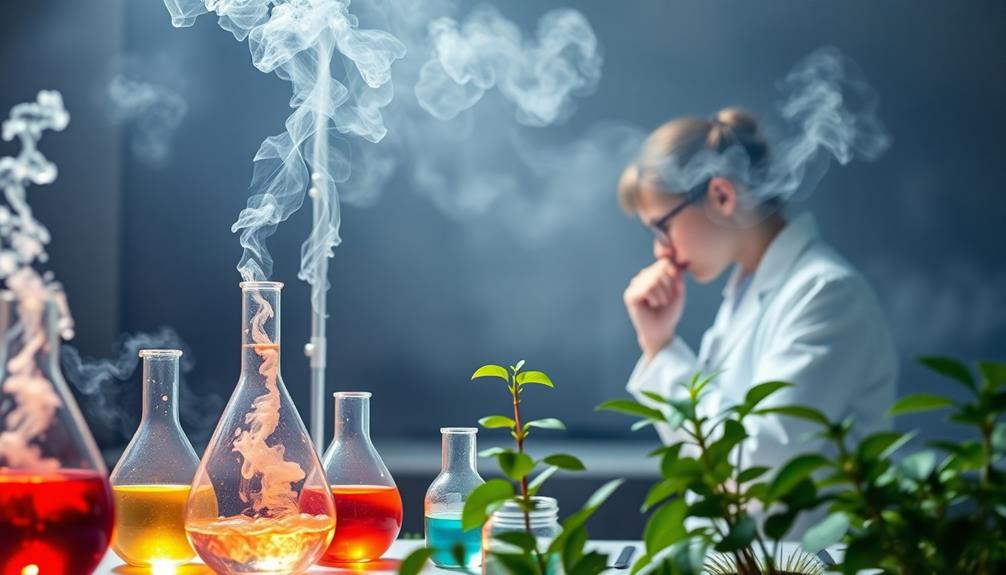
When you think about gases we encounter in our daily lives, carbon dioxide (CO2) mightn't come to mind, but it plays a crucial role in our environment. This colorless, odorless gas is essential for life, yet its lack of smell can be misleading.
In confined spaces, CO2 can build up without you even noticing. Since you can't detect CO2 through your senses, it's important to be aware of where it might accumulate, especially in enclosed environments like basements or poorly ventilated rooms.
At normal levels, carbon dioxide doesn't pose a threat, but at high concentrations, it can lead to health effects. You might feel a burning sensation in your nostrils when CO2 levels rise, acting as a warning sign.
However, relying on this sensation isn't enough. To ensure your safety, consider using specialized equipment or monitors to detect CO2. Being proactive about air quality can help you avoid potential dangers.
Description of the Smell

How can something that's essential for life be completely odorless? That's the case with carbon dioxide (CO2). This gas is colorless and doesn't have a detectable smell for humans, making it challenging to identify without special equipment.
You might think that if something is in the air, you could smell it, but CO2 doesn't play by those rules. At high concentrations, some people notice a burning sensation in their nostrils, which might feel like a smell. However, this is more about irritation than actual scent.
Because CO2 is odorless and tasteless, it's easy to have unnoticed exposure, which is why monitoring systems are so important in places where it's produced or used, like factories or labs.
Interestingly, when CO2 mixes with water, it forms carbonic acid, which introduces slight acidity but doesn't produce any smell either. This means that while CO2 can alter the pH balance of water by increasing its acidity, it remains neutral in terms of odor. However, biological compounds often contribute more directly to the smells we associate with certain environments or conditions. For instance, cortisol’s unique scent characteristics, though subtle, can sometimes be detected in minute amounts during periods of stress, further influencing the olfactory landscape of our surroundings. In contrast to odorless substances like CO2, some compounds are notorious for their potent smells. For example, **creosote’s distinctive smell**, a tar-like aroma, is often associated with wood burning or preserved railway ties, and it can linger in the air for extended periods. These types of strong odors can strongly influence our perception of environments and are often tied to specific activities or industrial processes.
Source and Composition
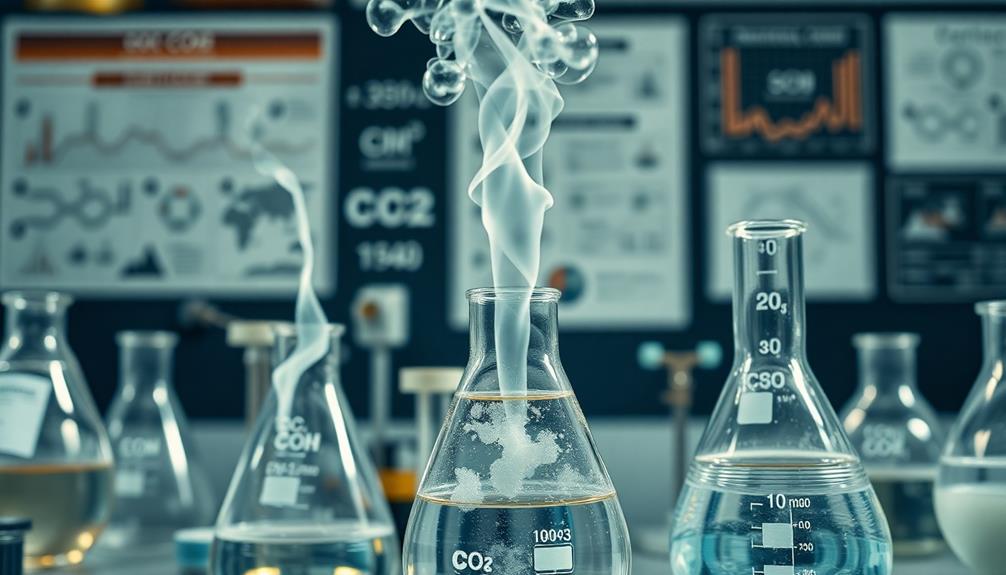
Carbon dioxide (CO2) originates from various natural and human activities, making it an integral part of our atmosphere. This colorless and odorless gas is composed of one carbon atom and two oxygen atoms, forming a simple yet essential linear molecule. You mightn't notice CO2 right away, but it plays a significant role in our lives.
CO2 is produced through respiration in both animals and plants, where they take in oxygen and release carbon dioxide. It's also created during the combustion of fossil fuels, like when we burn gasoline in our cars or coal in power plants. This process adds CO2 to the atmosphere, contributing to the greenhouse effect.
In water, CO2 reacts with H2O to form carbonic acid, which can affect the pH levels of lakes and oceans. This means that CO2 isn't just floating around in the air; it's actively participating in various chemical reactions.
Understanding the sources and composition of carbon dioxide helps you grasp its importance in maintaining the balance of our ecosystem. By recognizing its origins, you can better appreciate the role this gas plays in our atmosphere!
Typical Scenarios or Environments
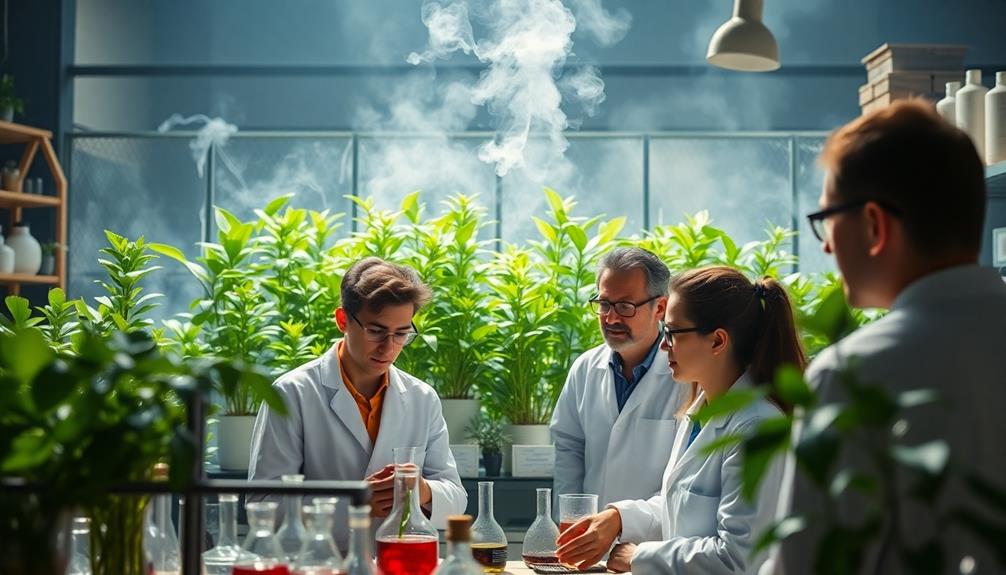
Proper ventilation is crucial in these environments.
For example, if dry ice is used, it sublimates and releases CO2, which can displace oxygen in enclosed areas, posing risks without any detectable smell.
That's why monitoring systems are essential in places like laboratories or storage areas where CO2 is present. They help keep you safe by alerting you to dangerous conditions before they become serious.
Emotional or Cultural Associations

The fact that CO2 is odorless often leads to misunderstandings about its presence and the risks it poses. Many people don't realize that CO2 can affect air quality issues, especially in enclosed spaces. This lack of awareness can cause anxiety about exposure to CO and the dangers of carbon in our environment.
Culturally, we're growing more aware of how important it's to monitor air quality and protect our planet. The absence of scent in CO2 serves as a reminder that some of the most impactful gases are invisible. This understanding prompts discussions about environmental sustainability and how our actions contribute to climate change.
You might find that people are increasingly advocating for changes, like reducing our carbon footprints or embracing renewable energy sources. This emotional response to CO2's role in climate change can inspire positive action in communities.
Health or Safety Considerations
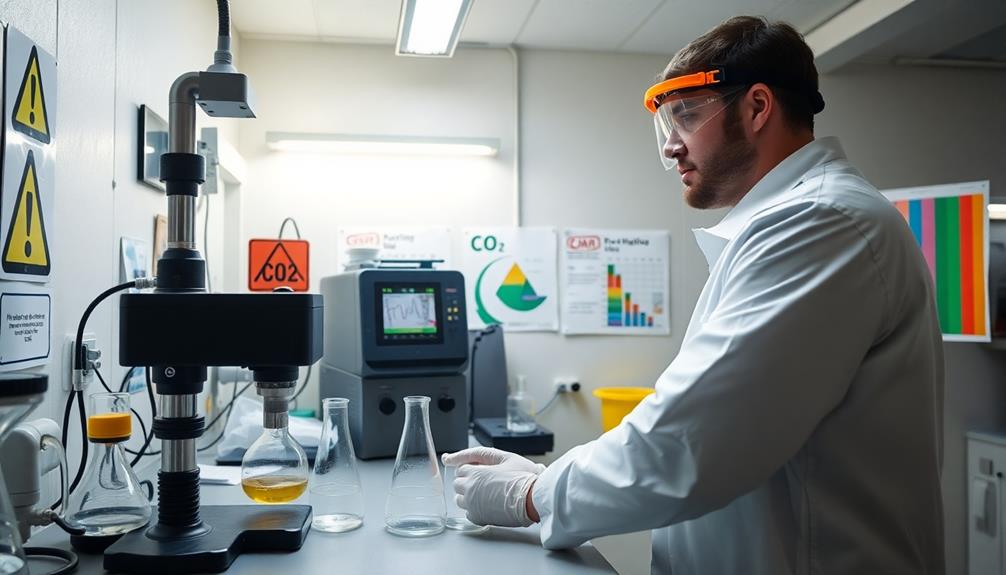
When it comes to health and safety, understanding carbon dioxide (CO2) is crucial, especially in environments where it can accumulate. CO2 is an odorless gas, which means you can't easily tell if there's a problem without special equipment.
In confined spaces, high levels of CO2 can lead to serious issues like shortness of breath and headaches when concentrations go over 1,000 ppm. If CO2 levels exceed 5,000 ppm, you could even face a loss of consciousness!
To keep yourself safe, it's essential to have proper ventilation in places where CO2 might gather. Using a CO detector is a smart step in ensuring your safety.
These detectors can alert you in real-time if CO2 levels become dangerous, allowing you to act quickly.
Final Thoughts
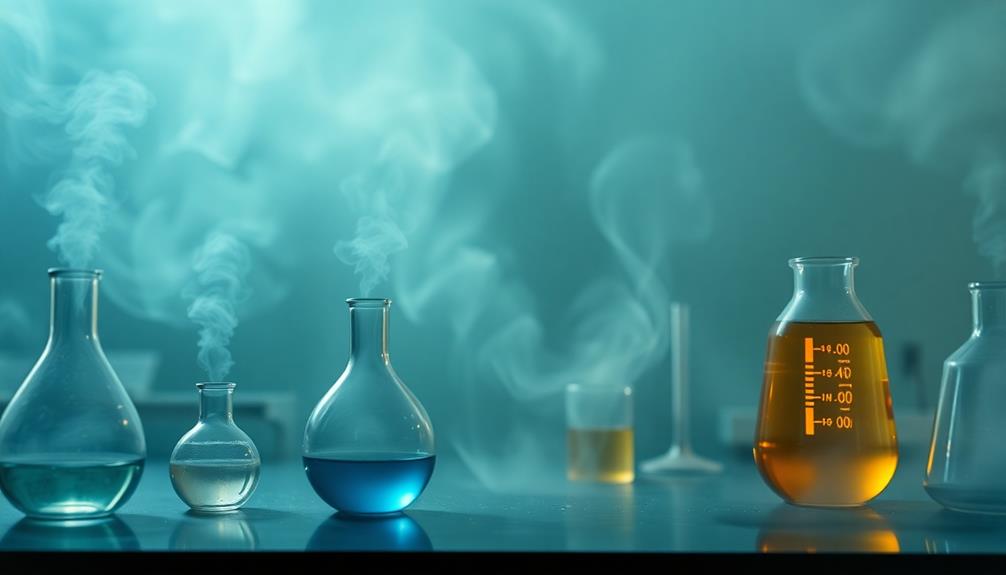
Understanding the properties of carbon dioxide (CO2) is essential for ensuring safety in any environment where it might accumulate. Since CO2 is odorless, you can't smell it, which makes it tricky to detect without special equipment. This lack of smell increases the risk of unnoticed exposure, especially in confined spaces. If you're in an area with high levels of carbon dioxide, you might feel a burning sensation in your nostrils, a sign that things aren't safe.
To stay safe, it's important to monitor your environment. Consider using carbon monoxide detectors, which can alert you to the presence of CO and other dangerous gases. If there's a gas leak, you should open windows to improve ventilation.
Remember, natural gas has a distinct smell, making it easier to detect compared to CO2.
Awareness is key! Always be proactive about safety and take precautions, especially in places where CO2 might build up. By keeping an eye on your surroundings and using the right equipment, you can help protect yourself and others from potential dangers.
Stay informed, stay safe, and enjoy your surroundings!
Frequently Asked Questions
What Does a CO2 Leak Smell Like?
A CO2 leak doesn't have a smell, making it hard to detect. You might notice a burning sensation in your nostrils if concentrations are high, but it's crucial to use detectors for safety.
What Is the Odor of CO2?
CO2 doesn't have an odor, so you won't smell it in the air. This can be dangerous since you might not realize it's accumulating, especially in low-lying areas where it tends to gather.
Does Carbon Have a Smell?
Carbon itself doesn't have a smell. When burned, it produces smoke and other compounds that may emit odors. So, while carbon's presence is essential in various reactions, you won't detect a smell from it directly.
What Is the Difference Between CO2 and Carbon Monoxide?
When you compare CO2 and carbon monoxide, you'll notice CO2 is essential for life, while carbon monoxide is toxic. CO2 supports photosynthesis, but carbon monoxide can cause serious health risks in confined spaces.









